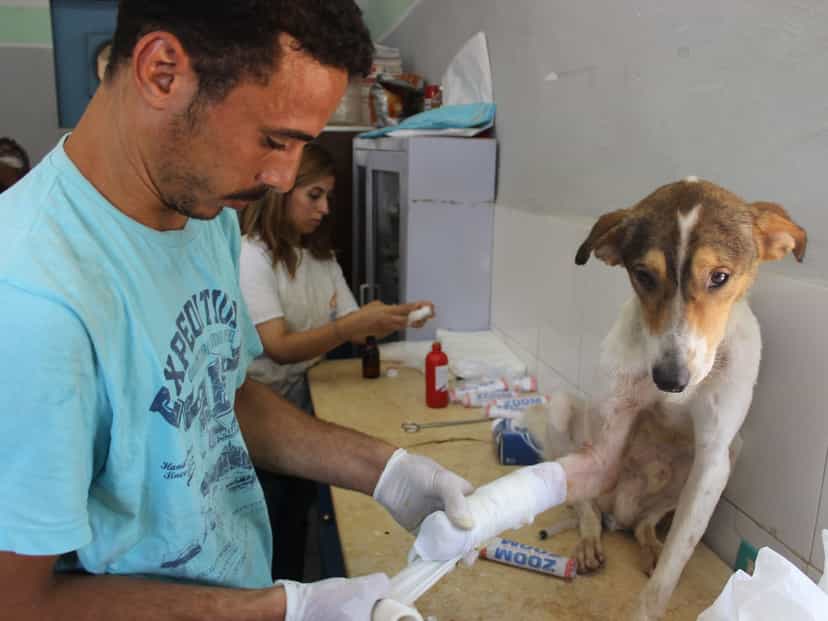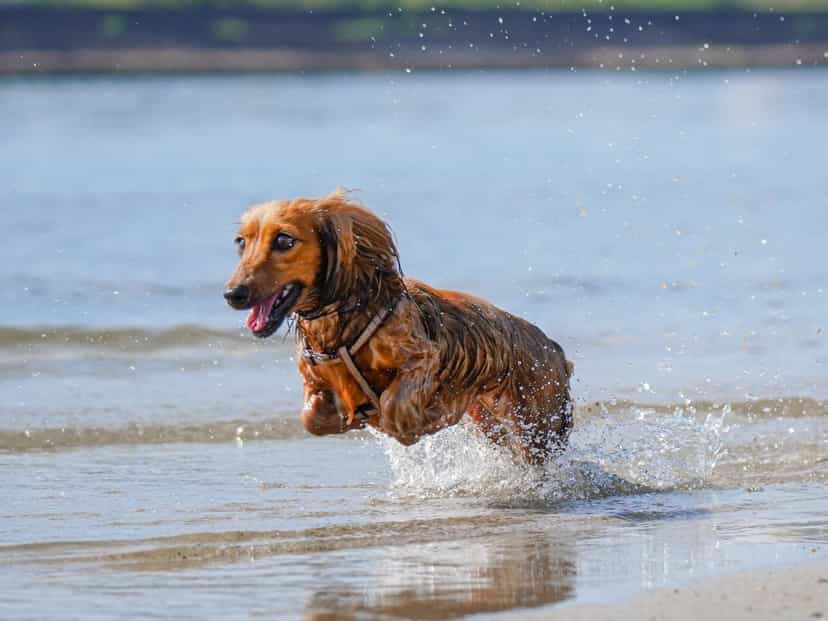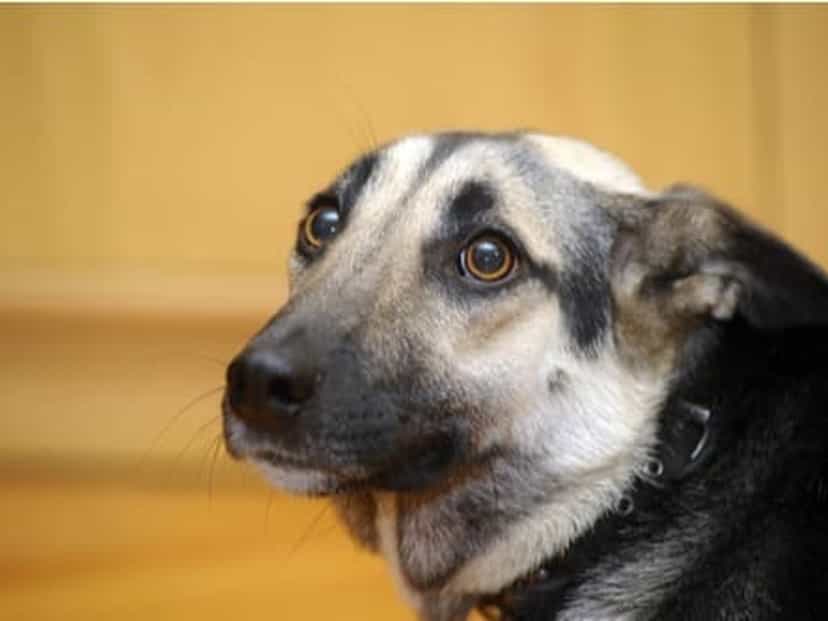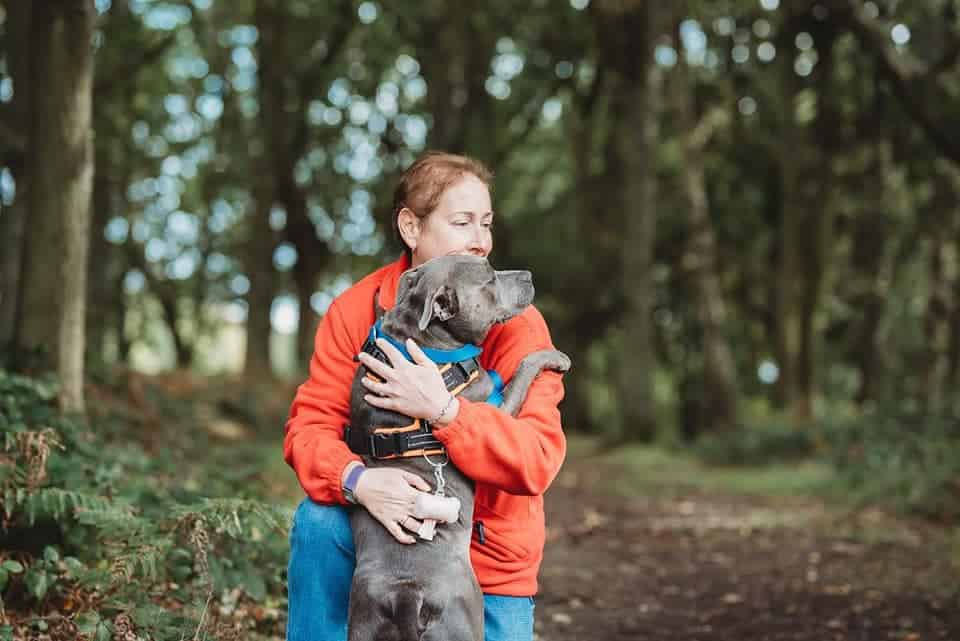
What is an Epulis? What are the signs and symptoms of an Epulis? Should I contact the vet if I find my dog has an Epulis? What chewing treats are best for my dog if they have an Epulis? Dog First Aid Herts and Beds Louise Guiver answers all of your questions and more on this interesting subject
Do you have a dog that loves chewing sticks? My dog Opie loves nothing better, earlier this year I noticed that his gums had been bleeding so after a trip to the vets he was diagnosed with Epulis.
What is an Epulis?
An Epulis refers to a benign (non-cancerous) mass-like growth in the mouth that typically grows over or around a tooth. Epulides arise from the periodontal ligament, a small piece of tissue that connects the tooth and the surrounding bone – therefore really getting to know your dog, looking inside their mouth is so very important – what is normal, has there been any changes since you last looked?
An epulis is an oral tumour, meaning it only afflicts a dog's mouth; however, there are a number of places within the mouth where it may appear. The most common areas are on the edges of the gums or between the dog's teeth.
If you find that your dog has an epulis tumour the sooner that is diagnosed by your vet, the better for your dog. An epulis can be benign (i.e., non-cancerous) or malignant (cancerous). But it’s a little bit more complicated than that. Even a benign epulis can cause a lot of trouble. This type of tumour can be “locally invasive,” which means that it can grow into the jawbone and literally eat the bone away.
Signs and Symptoms
With an epulis, you may notice bad breath (halitosis), drooling or bleeding from the mouth. As the mass becomes larger, your dog may have trouble eating. A visit to the vet may reveal a mass along the gum This is what Opie has on both sides of his mouth.
The symptoms to look out for is that the growth that forms between the dog’s teeth is generally firm, similar in colour to the gums and smooth. Some epulides will present with a peduncle attaching it to the gum, bleeding from mass, difficulty chewing, displaced teeth, drooling, loss of appetite or a pink raised growth.
Any dog may be susceptible to an epulis tumour; however, some dogs are more prone to this tumour than others, based on their breed and age. By learning your dog's risk of an epulis, you can be more proactive in monitoring your dog's health and looking for any signs of malignant growth in your dog's mouth.
Brachycephalic (short faced) breeds of dog are more likely to develop epulis tumours. This breed category includes dogs that have very short muzzles and noses, including boxers and bulldogs.
- Both sexes are equally susceptible to epulis tumours. The main factors are age and breed.
- Dogs typically develop epulis tumours in their middle-aged years, usually around the age of seven.
I cannot emphasise how important it is to check your dog’s gums, as I had mentioned previously there are a number of places within the dog’s mouth where it may appear. The most common areas are on the edges of the gums or between the dog's teeth.
Because an epulis can form in multiple places, it may be difficult to diagnose at home if you don't know what you're looking for. You should typically see some type of firm growth attached to the gum, usually by a stem or stalk-like body. An epulis is almost always the same colour as the dog's gum tissue and may have a smooth or rough appearance, depending on the type of epulis.
Types of Epulis
There are three main types of epulis tumours that affect dogs. They are differentiated based on their composition, appearance, and location in your dog's mouth.
- Peripheral odontogenic fibroma (POF). Formerly called a fibromatous epulis, this type of tumour is situated on the marginal edges of the gums, usually with a smooth, pink appearance. It consists of tough and fibrous gum tissue.
- Ossifying epulis. This kind of tumour has a smooth, polished appearance due to the presence of bone cells mixed with fibrous tissue.
- Acanthomatous ameloblastoma. These tumours, which may appear smooth or raw, are typically located on the front portion of the dog's lower jaw. It usually has its origins in the ligament that holds a given tooth's roots into the jawbone.
The physical presence of a growth between the teeth is usually what dog owners notice in their dog’s mouth, from personal experience this can also be confused with the dog’s jowls. There are several other symptoms that are commonly seen in dogs with an epulis These symptoms may include:
- Frequent drooling
- Difficulty eating
- Reduced appetite
- Bad breath
- Bleeding from the tumour
- Misaligned teeth surrounding the tumour
- Difficulty breathing
What to do if you spot an Epulis?
As soon as I noticed that Opie’s gums had been bleeding a lot and they looked inflamed I immediately made an appointment with the vet. My key message is that if you think you've spotted an epulis, it's imperative that you get your dog a vet’s appointment as soon as possible. Only a veterinarian can definitively diagnose a growth as an epulis, and even your vet will need to conduct tests to determine whether it is benign (a harmless cancer) or malignant (a cancer liable to be aggressive or spread to other parts of the body).
In the case of Opie, I take regular photos of his gums so that I can compare any change from month to month. I have been advised that if I notice any change at all in the growth then I must immediately notify them. It was explained to me that they would not remove the epulis because it can grow back quickly and more aggressively, so it is safer and in Opie’s best interest for me to keep an eye on it. To be honest initially I did struggle with this because I just wanted it out of his mouth. I thought “what are we waiting for” but once fully explained to me I understand that this in fact is the best course of action, and he is reviewed every 6 months.
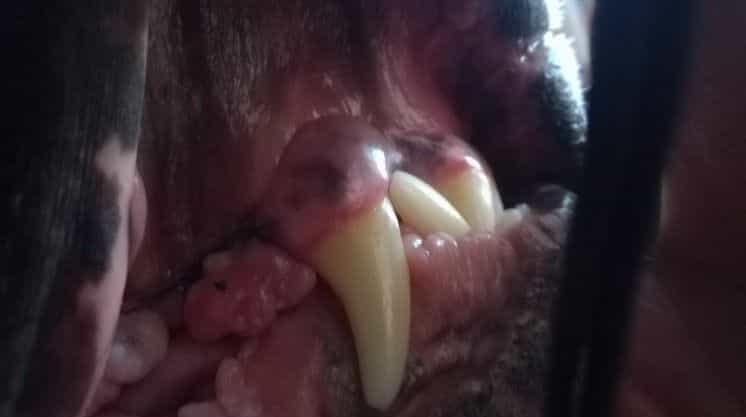
Alternative chews
I was advised to remove his plastic toys; he never really plays with them, just carries them about in his mouth, but this diagnosis prompted me to look at natural alternatives.
Opie enjoys a buffalo horn chew, antlers, and Yak chews but I was looking for something softer for his gums and quite earthy. I was over the moon to find a natural wood specific for dogs – perfect for my boy.
Every dog has a natural need to chew; it provides natural dental care as well as mental stimulation.
Olivewood chews are made from annually harvested wood. It is a close-grained wood that is harder than most native woods. It is dried and sanded and then lightly infused with virgin olive oil to give a healthy, safe, and satisfying chew for Opie. Unlike other woods it will not splinter.
The reason I feel these are so beneficial is because: -
- It is a safe, clean, and tasty chew
- Excellent for dental hygiene
- The fact that they are infused with Olive oil helps maintain a healthy coat and immune system.
I have found them to be durable and long lasting and I love the fact that it is 100% natural wood, finally Opie can bring his love of the woods into the home plus it is suitable for this condition.
